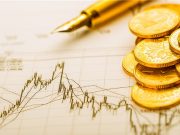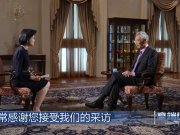By Johanna Kyrklund, Chief Investment Officer and Global Head of Multi-Asset Investment, Shroders
Like home-schooled children during the Covid crisis, markets seem to be struggling to pay attention for long.
For parents, one of the most difficult parts of lockdown has been home-schooling their children. My social media feed has been full of people tearing their hair out as long-forgotten concepts such as subordinate clauses or trigonometry have come back to haunt them.
Not only that, they’ve faced the challenge that professional teachers tackle every day: how to get children to pay attention for any period of time.
Stock markets during the Covid-19 crisis have shown that it’s not just children who can suffer from an attention deficit.
Since the initial slump, the incredible performance of shares as the pandemic has spread around the world, causing hundreds of thousands of deaths and causing untold economic damage, shows that investors have perhaps not been paying enough attention.
 While Covid-19 grabbed their attention initially, they were soon distracted by the immense stimulus provided by central banks and governments. This continues to drive markets higher, glossing over some underlying concerns.
While Covid-19 grabbed their attention initially, they were soon distracted by the immense stimulus provided by central banks and governments. This continues to drive markets higher, glossing over some underlying concerns.
Now, as infection rates in the US spike significantly, it could be time to refocus. Another tragic rise in deaths could be in store in the world’s largest economy, and put the brakes on any nascent recovery. I’m not sure that markets are prepared for this.
Even if there is not a return to lockdown, the economic impact could be felt as a result of rising Covid-anxiety among consumers. After all, this is a consumer-led recession and anxious consumers will be slow to go out and resume their normal spending habits.
Consumption is not about to explode because of government measures. They are a rescue package to just keep the economy afloat, not to spark it to life.
As we head towards the autumn, complacent investors may get a wake-up call. The furloughing of staff may be masking some of the negative effects of the lockdown, and as furlough measures are removed job losses are likely to accelerate.
So how should investors manoeuvre their portfolios as the economic cycle moves from recession into recovery? This is where an understanding of the stages of the cycle can be a useful guide to asset allocation. While historical returns using the economic cycle is no guarantee of the future path, there is a reassuring rhythm to the performance.
So where does this leave the multi-asset team’s views on various asset classes?
I think it’s probably too early to be outright negative on the outlook for equities, which would be to go against the power of central banks as they continue to underpin the market rally. But at the same time, I think it is too late to be bullish about equities, given the reasons I’ve already mentioned. Neutrality seems right for the time being.
While we’re sitting on the fence with equities, we have more conviction in the areas that will continue to benefit from the immense liquidity being provided by central banks.
This means we remain positive on gold. Even though it’s performed strongly, recently hovering around the US$1800 level, which is near to a record high, we think there could be potential for further gains. People often describe it as a hedge (a form of protection against loss), but it’s behaving more like risk assets such as shares. Gold is one of the main beneficiaries of the support measures.
Similarly, we still favour corporate bonds, both investment grade, as well as non-investment grade, high yield bonds. These are also major beneficiaries of the stimulus measures and yields remain relatively attractive.
However, as the Covid-19 crisis evolves and other major issues such as November’s US election and Brexit loom, we’ll certainly need to pay close attention and not get distracted.















































